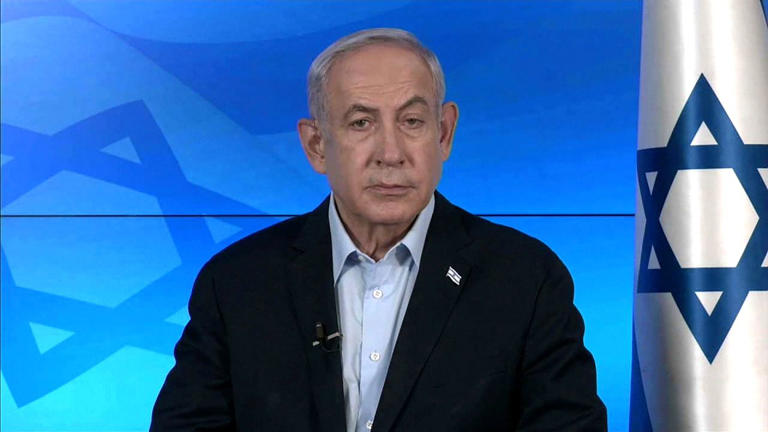Gaza Under Fire Again: What Israel’s New Offensive Means Amid Rising Global Pressure
As Gaza reels under yet another wave of deadly violence, the world watches with growing alarm. Israel’s newly launched military campaign—titled “Gideon’s Chariots”—has plunged the besieged Palestinian enclave into deeper turmoil, triggering condemnation and urgent warnings from key international players. The offensive, which began just days after former U.S. President Donald Trump’s visit to the region ended without a truce or hostage deal, marks a significant escalation in one of the most enduring and brutal conflicts of our time.
In the span of just a few days, hundreds have been killed. Entire families have been buried beneath the rubble of collapsed buildings, and humanitarian access has been pushed to a new breaking point. The violence, now shifting from airstrikes to an intensified ground invasion, is reigniting fears of a long-term war with devastating consequences for civilians.
The Operation: “Gideon’s Chariots”
The Israeli Security Cabinet gave its nod to the military operation on May 5, signaling an expansion of the war aims that have defined the conflict in Gaza. Officially, the stated objectives are clear: eliminate Hamas as a military and political force and recover the remaining Israeli hostages held in Gaza.
The Israel Defense Forces (IDF) swiftly executed the directive. Heavy aerial bombardments were launched across the strip, targeting what Israel claims are Hamas strongholds. But as is often the case in Gaza, the line between combatants and civilians is tragically blurred. Hospitals have reported an influx of civilian casualties, many of them women and children, with some entire families reportedly wiped out in a single strike.
As the weekend gave way to Monday, the campaign intensified further with Israeli ground troops advancing simultaneously into both northern and southern Gaza. The push, according to military statements, is designed to dismantle what remains of Hamas’s infrastructure while asserting full territorial control—a goal Prime Minister Benjamin Netanyahu openly stated Israel now seeks.
Global Outcry and the Threat of Sanctions
This latest escalation has not gone unnoticed by the international community. For the first time since the war’s early days, staunch Western allies of Israel are expressing serious displeasure—and issuing direct warnings.
The United Kingdom, France, and Canada released a rare joint statement on Monday threatening “concrete actions” if Israel does not halt its assault and immediately allow unhindered humanitarian aid into Gaza. Among the measures under consideration are targeted sanctions, diplomatic freezes, and even potential arms review agreements.
The shift in tone is notable. Historically, these countries have maintained a largely supportive posture toward Israel, often citing its right to self-defense. But the scenes emerging from Gaza—mass civilian deaths, destroyed aid convoys, and blocked relief efforts—are testing that alignment.
Israel’s decision to allow five trucks of humanitarian aid into Gaza has done little to stem the criticism. UN aid chief Tom Fletcher called the effort “woefully insufficient,” noting that it represents only a fraction of what is needed to address the hunger, medical emergencies, and displacement within the enclave. “A drop in the ocean,” Fletcher said, capturing the sheer scale of the crisis.
The Stalled Ceasefire and Doha Talks
At the heart of this renewed violence is a failure in diplomacy. Hopes were briefly raised when Hamas and Israel entered indirect negotiations in Doha, Qatar over the weekend. However, those talks appear to have reached an impasse. Hamas has refused to accept Israel’s terms, especially those requiring unconditional surrender and no guarantees of Palestinian autonomy.
Former President Trump, who had positioned his visit as a chance to broker a deal, left the region without any tangible outcome. Soon after his departure, Israel moved forward with its military agenda—leaving little doubt that the operation was premeditated, and not merely a response to stalled talks.
The timing has raised questions about Israel’s long-term intentions. Is this offensive aimed at pressuring Hamas into submission, or is it part of a broader strategy to redraw the political map of Gaza? Netanyahu’s remarks about taking “complete control” over the territory suggest the latter.
Humanitarian Collapse and the Cost to Civilians
For Gazans, the price of this war continues to climb with unbearable speed. More than two million people live in the Gaza Strip, already suffering from years of blockade, power shortages, and crippled infrastructure. This new ground offensive, paired with sustained airstrikes, is compounding a humanitarian disaster that has few parallels in the modern world.
Reports from inside Gaza paint a grim picture. Hospitals are overwhelmed. Medical supplies are running out. Clean water is scarce. And families are being displaced for the third, fourth, or fifth time within just a few months. The situation is not only a tragedy; it is a breach of international humanitarian law, according to several rights organizations.
Meanwhile, aid agencies remain largely sidelined. Their convoys are blocked, their workers endangered, and their missions increasingly politicized. Even when aid is allowed through, it’s too little and too late.
What Comes Next?
As Israel pushes forward with its campaign, and global powers inch closer to imposing punitive measures, the question remains: what is the endgame?
Will this offensive truly eliminate Hamas, or will it deepen the cycles of violence and radicalization that have haunted the region for decades? Can Western governments follow through on their threats of sanctions, or will geopolitical calculations again override moral imperatives?
What’s increasingly clear is that the cost of inaction—both diplomatic and humanitarian—is unsustainable. The longer the war continues, the more it erodes regional stability, inflames public sentiment, and alienates Israel from its traditional allies.
But beyond the politics and the military strategies, it is the ordinary civilians—mothers, children, the elderly—who are paying the highest price.
This is not just a geopolitical story. It is a story of broken homes, shattered lives, and fading hope. And unless the world steps in with more than just statements, that story will only grow darker in the days to come.
